Sport - Interview
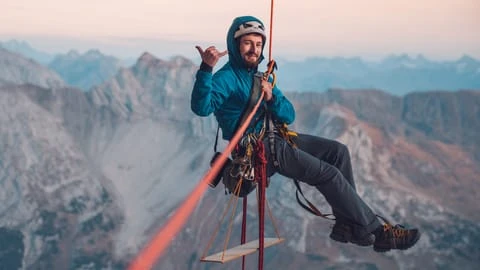
Interview with Climbing Photographer Paolo Sartori
Sport - Interview
by Melisa Kaya
Paolo's working place is not his studio. Mountains are his comfort zone since he decided to be a climbing and skiing photographer. Tripods, softboxes, and big lights are not his most important equipment in the extreme conditions, he has to trust his ropes, carabiners, and quickdraws while shooting the moment. I talked with climbing, skiing, and mountaineering photographer Paolo Sartori about his career and the importance of photography in climbing.
Paolo, before talking about photography, I would like to learn more about your climbing and skiing passion. Could you tell us about yourself? Who is Paolo Sartori?
I was born and raised in a small village in the Italian Alps, with the mountains being my playground since I was a child, so getting into skiing and climbing was something natural for me and my friends. Childs living seaside want to become surfers. We wanted to become mountaineers.
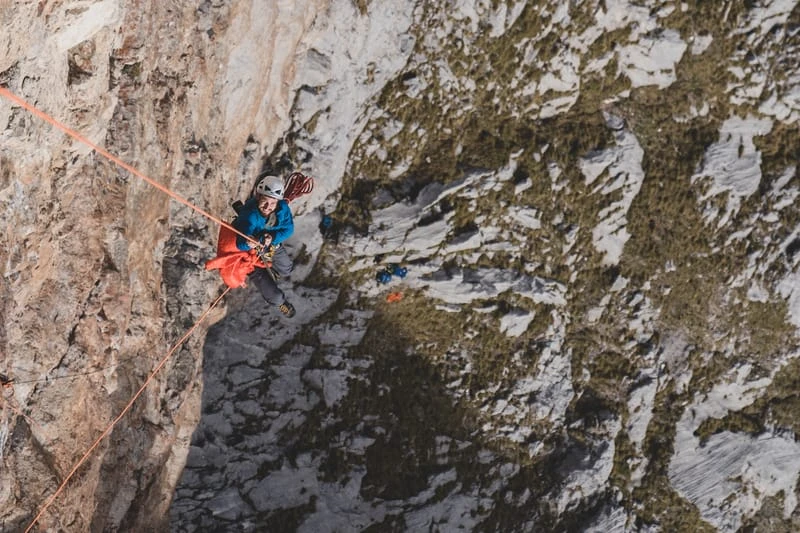
Paolo Sartori jumaring up a rope to get in the right shooting place on Rote Wand, Austria. ©Enrico Veronese
How could you describe your photographic approach? What are you doing to make a difference?
Good question. Today there are thousands of talented photographers, and with the technology available it’s easy for everyone to produce quality pictures. So in order to stand out, you have to always push the limits further than anyone else. To me, this means doing a lot of pre production work, arriving earlier, staying later, moving quicker, working harder. I find that often the best shots happen in the most uncomfortable moments, so you have to be there and ready.

Sometimes you have to walk up 4 hours in the for just to get one image... Lepontine Alps, Italy. ©Paolo Sartori
You have been shooting climbing and mountaineering activities of athletes. In order to do this, you have to be near them, how do you keep up with them in this extreme conditions?
Well, when it comes to shooting in the mountains often the biggest challenge is to be in the right spot at the right time…so you must be able to move quickly and safely in every terrain. I often shoot with some of the best athletes around and the last thing I want is to hold them up because I can’t keep the pace.
When I’m not on assignment my main focus is on training; my weekly routine includes 3-4 long trail running sessions (or ski-mo in winter), a couple gym workouts and at least 2-3 days of climbing outside.

Lena Drapella climbing in Sardinia ©Paolo Sartori
What kind of projects do you prefer to work on?
The ones where athletes are pushing themselves, no matter what sport. One of the most inspiring things for me are people who push their limits further; they are doing their best, so I want to do my best too in order to tell their story in a proper way.

Jacopo Larcher and Babsi Zanger dealing with a lot of gear during a thunderstorm on Eiger Nordwand. I was there to document the first single-push repetition of the hardest route in the wall. ©Paolo Sartori
What were the most extreme conditions that you have experienced?
Shooting on 6000m high peaks in Peru with really strong wind is probably the most extreme due to the cold; Eiger North Face comes to my mind too as one of the wildest walls I’ve been shooting on, there where rockfalls everywhere.
How could you describe yourself, are you an athlete or a photographer?
Totally a photographer. Obviously, I need to train my athlete skills in order to do my job, but the athlete job is the performance, my job is to tell his story.

Ski touring in Mont Blanc area. ©Paolo Sartori
What are the key points that you pay attention the most before accepting a new project? What is the importance of the security factor in project selection?
The most important thing, it has to show outdoor life in an authentic way. Today many companies, especially the ones that are not strictly in the outdoor industry, don't understand that. Regarding security, there is always some risk involved when shooting extreme sports on location. I take all the precautions I so that me and the crew are safe; working with top athletes is really helpful on this because they understand perfectly the environment we are working on and they are used to deal with it. I like to think the risks are minimal, but there's always something you can't plan for...
Is there any summit or route that you would like to climb and shoot as your dream project?
Sure, too many to list them! Next year I’d like to go back to Cordillera Blanca where I’d like to climb the iconic Alpamayo and than some more challenging ice and mixed routes. But then there is Nepal, Alaska…so many things to do!
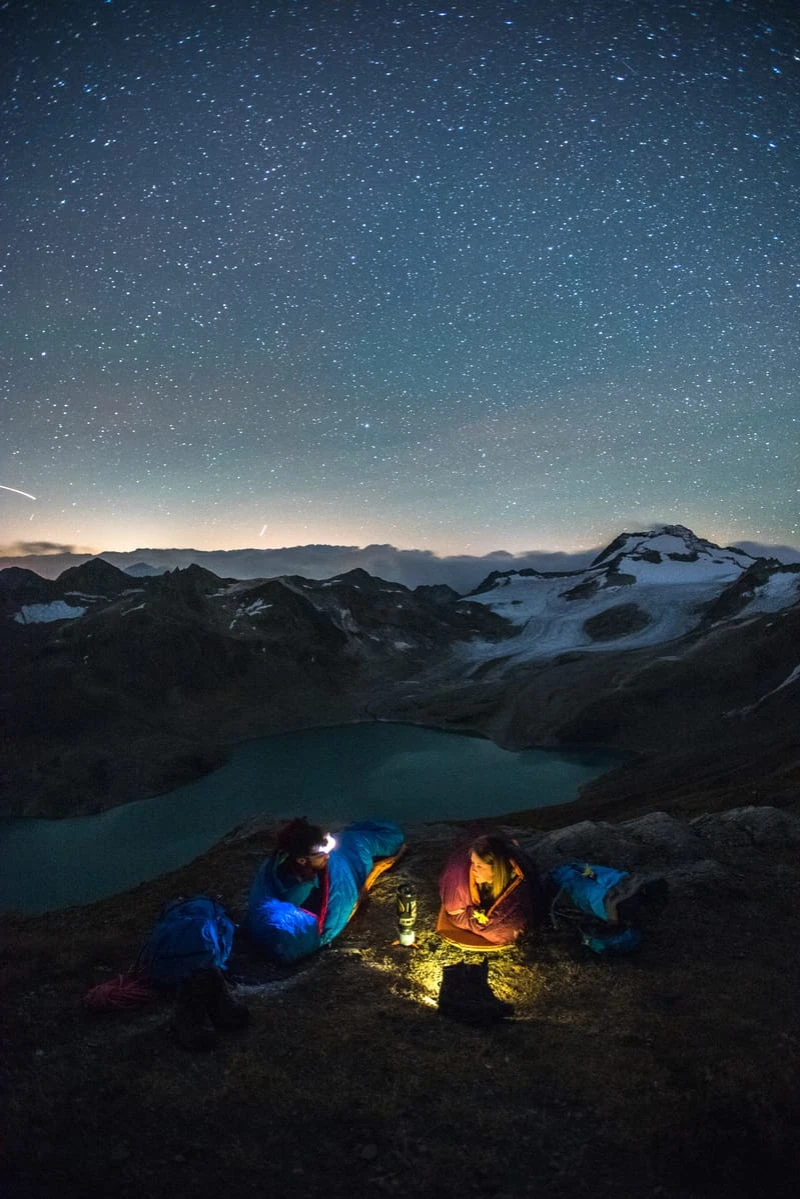
Sometimes the best shots happen in the simple moments. ©Paolo Sartori
You are shooting photos of athletes but at the same time, you are focusing on the products that they are using. What do you think about the effect of a good photograph in the buyer's decision?
Let’s face it this way: I’d like to create an image that athletes would be happy to hang on their wall, while my client wants the image to display their products. If I manage to satisfy both, I can call it a good day.
Regarding the relationship between visual communication and buyers, I strongly believe that companies often focus too much on showing products. It’s natural since they spent a lot of time designing every little feature of their product and they want to show it. But the real power of a photograph is the emotional reaction it generates; if the reaction is strong people will feel connected to the athlete and the brand. And the next time they will buy something, this emotion will influence their choice. It would never happen with a close-up shot of a jacket.
If you look at Patagonia visual communication, which in my opinion is one of the best in the industry, you’ll hardly see products. You just see big, inspiring action and landscape photos.

Jacopo Larcher on the crux pitch of Odyssee, the hardest route on Eiger Nordwand. ©Paolo Sartori
What kind of services do you offer to brands and athletes?
Well, I like to think of myself as a visual storyteller. I know, this is a word a bit overrated today, but it is what I do: telling a story through photos and videos.
It can be the story about an athletic performance or the development of a new jacket, but is important to me that is more than just one shot. In the bigger picture, the service I offer to brands is to help them communicate their philosophy to their customers.

Paolo on location in Rote Wand, Austria. ©Enrico Veronese
You are working in a very advantageous segment of photography, it is very hard to be a climbing photographer by only getting a pro camera. How did social media influence competition in this area?
That’s true in some ways, but the downside is that many good athletes are now able to get a relatively cheap camera and start shooting their own stuff. That’s good if they want to become photographers, but often there are people giving all kind of photography rights to companies in exchange for a pair of climbing shoes. They are happy with it because they don’t know how this industry works, but advertising rights have a great value for companies, so they should pay for it.
Same for social media, there are people new to the game that will accept a jacket for posting weekly for one year.
That said, I’m not too worried about these things because when it comes to more serious productions these people won’t even be considered for the job. Doesn’t matter how many followers you have if you’re going for a commercial shoot, you must be able to bring back some really great content or you won’t get that job a second time.

'Ice climbing is one of my favorite subjects. It's like being in a separate reality.' ©Paolo Sartori
In the future, your biggest opponent could be drones. What do you think about using drones in climbing and skiing photography?
For shooting video drones are already a must; I often use them on my productions. But for still photography there are no drones that can substitute you being close to the action; it isn’t just a matter of sensor size and camera specs. If you really want to capture a photo that brings the viewer into the action, you must be there.

Stefano Ghisolfi climbing First Round First Minute, 9b. Margalef, Spain. ©Paolo Sartori
What are your expectations from brands and athletes for a successful collaboration?
From brands, most important thing is that they have an understanding of the activity we’re going to shoot. That’s important to tell the story in the most authentic way possible. From athletes, they have to understand that getting the shot is a collaboration between photographer and athlete, and their job is as important as mine.
Could your clients use the photographs in any publication, catalog, website, ad or other platforms in the future?
It depends on the rights they are paying for. I never do buyouts (selling all the rights in perpetuity) so companies are paying for certain rights that last a certain time frame. This could range all the way from a one-time social media post to ten years of full rights, including ad usages. Of course, this last option would be way more expensive for the client because the value they bring out from that photo is way bigger.
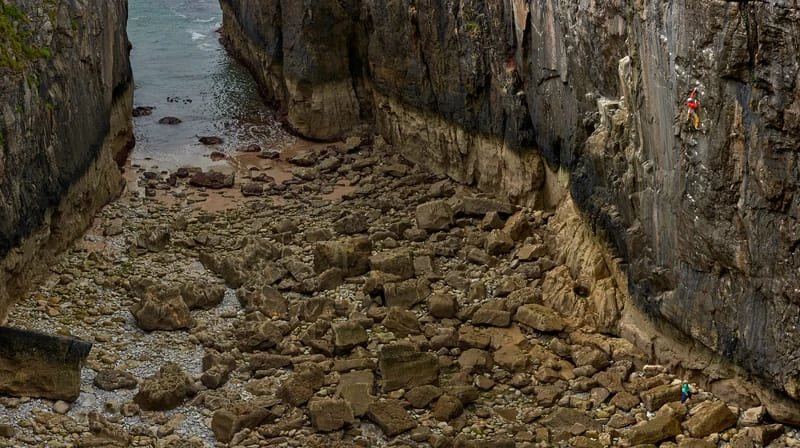
Roland Hemetzberger climbing the hard and dangerous Point Blank in Pembroke, Wales. ©Paolo Sartori
What advice would you give to photographers who want to pursue a career in photography?
I would try to encourage them, but I often get help requests that sound like "where’s the shortcut to get where you are?". The reality is that you have to work hard, learning, practicing and maybe often failing. If you are consistently producing great content and sharing it, clients will find you. So my first advice would be to become really good at taking photographs. It sounds like oversimplifying, but I believe that most of the new photographers are focusing more on getting hired than becoming better at what they do, and this is not going to pay off in the long run.
What is your favorite photograph that you have ever taken?
There is not just one. I’m constantly evolving as a visual artist so often my favorite shots are the ones from my last shoot.
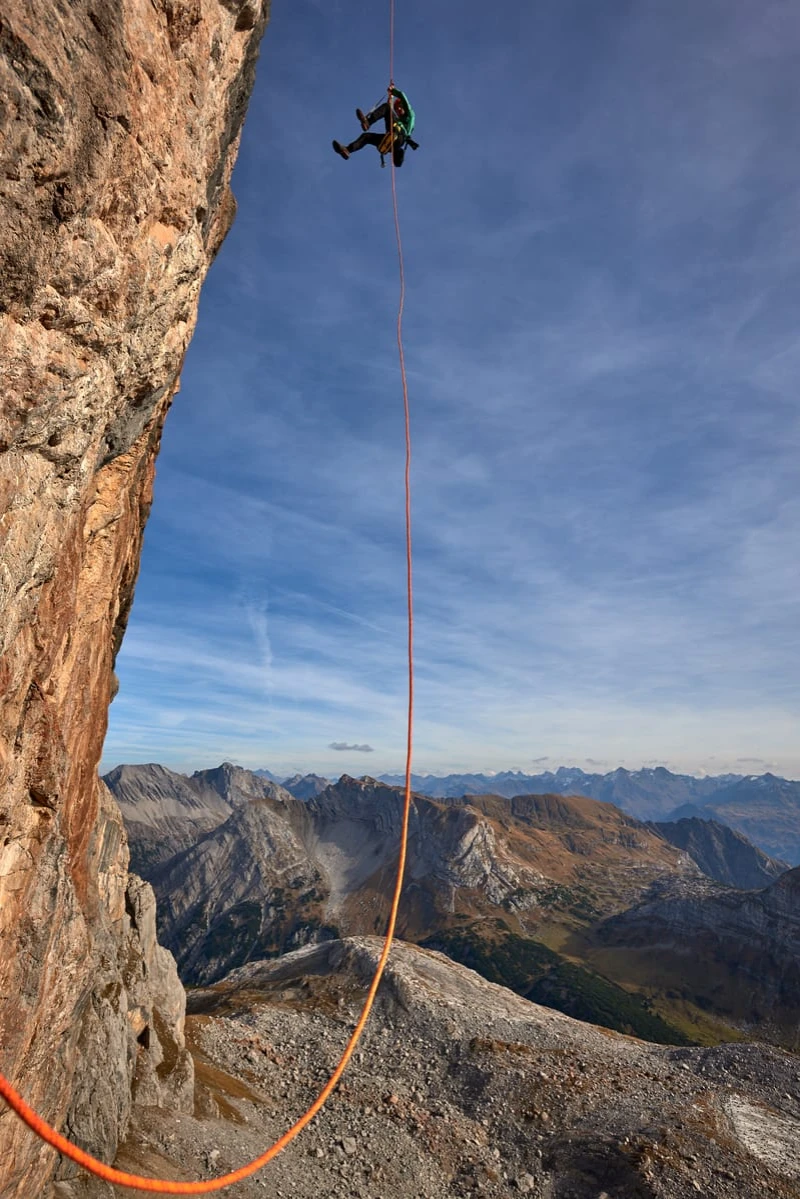
Paolo getting into position. ©Paolo Sartori
What do you think about social media? How can our readers follow you?
Social media are a great way to connect and communicate with more people, but there are big downsides to that. Being a photographer and trying to push myself creatively, I find a bit sad to see all the people traveling to the same places to get the same shot to be posted on Instagram.
Personally, I try to publish stuff that inspires myself first.
My accounts are @paolosartophoto on Instagram and @paolosartoriphotography on Facebook.
I know you will take photos from the skies next season. What is next for you?
Yeah! This year I got my paragliding license. I need some time to practice it, but I already have a lot of projects in mind…being in the skies myself will be better than using a drone!
Thank you Paolo for this enjoyable interview.
For more information, please visit the website of Paolo Sartori
This interview was conducted in a Question-and-Answer format. The answers were checked for grammar and punctuation and published without any additional editing. Monday, November 5, 2018. All photos are the property of their respective owners.